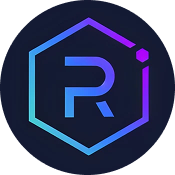In the intricate world of decentralized finance, understanding the core functionalities and strategic roles of key platforms like Yearn Finance and Chainlink is essential for any serious investor. While Yearn streamlines yield optimization across DeFi protocols, Chainlink serves as the vital bridge connecting smart contracts with real-world data. This comparison dives deep into their mechanisms, use cases, and the unique value propositions they offer, providing clarity amidst the complexity of DeFi's evolution.
Short on time? Jump to Yearn Finance vs Chainlink Comparison
Understanding Yearn Finance and Chainlink ?
Yearn.Finance, launched in 2020 by Andre Cronje, is a decentralized asset management platform built on Ethereum that automates yield farming by aggregating multiple DeFi protocols. Its core functionality revolves around optimizing returns through 'vaults' that automatically move funds to the highest-yield opportunities. Users interact via connected wallets, depositing assets into vaults that employ complex strategies involving lending, borrowing, and liquidity provision to generate yields. The platform's governance token, YFI, empowers holders to participate in decision-making processes, ensuring community-driven evolution.
Chainlink, established in 2017 by Sergey Nazarov and Steve Ellis, is a decentralized oracle network designed to connect smart contracts with real-world data securely and reliably. Its primary role is to facilitate off-chain data integration, enabling smart contracts to execute based on external events such as market prices, weather data, or transaction statuses. By providing tamper-proof, tamper-resistant oracles, Chainlink enhances the capabilities of DeFi applications, insurance, gaming, and beyond, effectively bridging the on-chain and off-chain worlds.
Both platforms have become foundational in DeFi ecosystems but serve distinctly different purposes—Yearn as a yield optimizer and asset manager, and Chainlink as a data provider and connectivity layer. Their architectures and strategic focuses reflect their unique contributions to the blockchain landscape, making them vital for investors aiming to understand the broader DeFi infrastructure.
Understanding these platforms' mechanics, use cases, and community roles helps investors evaluate their impact and potential within the decentralized economy. As DeFi continues to mature, the synergy between protocols like Yearn and Chainlink highlights the importance of both optimized asset management and reliable data feeds in building resilient financial systems.
Key Differences Between Yearn Finance and Chainlink
Primary Function
- Yearn Finance: Yearn Finance functions primarily as an automated yield aggregator, helping users find the highest returns across DeFi protocols by dynamically reallocating assets into the most profitable strategies. It simplifies yield farming by automating complex processes, making it accessible for both novice and experienced investors.
- Chainlink: Chainlink acts as a decentralized oracle network that supplies smart contracts with real-world data, essential for executing contracts based on external conditions. Its role is infrastructural, providing the reliable data necessary for DeFi applications, insurance, and other smart contract-powered services.
Core Technology
- Yearn Finance: Yearn leverages smart contracts on Ethereum to create vaults and strategies that optimize yield. Its architecture is built around the ERC-20 standard, employing vaults that automatically rebalance assets based on market conditions to maximize returns.
- Chainlink: Chainlink utilizes a network of decentralized oracles—independent data providers—that deliver secure, tamper-proof data to smart contracts. Its proprietary reputation system and node operators ensure data integrity and resistance to manipulation across multiple blockchains.
Use Cases
- Yearn Finance: Yearn's primary use case is automated yield farming, portfolio management, and liquidity provision within DeFi ecosystems. Users deposit assets into vaults, earning yields without active management, and participate in governance to influence platform development.
- Chainlink: Chainlink's use cases extend beyond DeFi to supply data for insurance contracts, cross-chain interoperability, gaming, and enterprise solutions. Its oracle services enable smart contracts to react to real-world events securely and accurately.
Governance Model
- Yearn Finance: Yearn's governance involves YFI token holders who propose and vote on platform upgrades, strategies, and parameter adjustments. This community-driven model ensures decentralization and adaptability.
- Chainlink: Chainlink's decentralized node operators and LINK token holders participate in securing the network, with some governance elements guiding oracle data quality and protocol upgrades, emphasizing security and reliability.
Tokenomics & Incentives
- Yearn Finance: Yearn's native token, YFI, is distributed through liquidity mining and governance participation, incentivizing active community involvement and platform security. Its capped supply emphasizes scarcity and value retention.
- Chainlink: Chainlink's LINK tokens are used to pay node operators for data provision and to secure the network. Incentives are aligned with maintaining high-quality, tamper-resistant data feeds critical for DeFi and enterprise applications.
Yearn Finance vs Chainlink Comparison
| Feature | ✅ Yearn Finance | ✅ Chainlink |
|---|---|---|
| Primary Function | Automated yield optimization across DeFi protocols | Decentralized oracle network providing real-world data |
| Core Technology | Smart contracts with vault strategies on Ethereum | Decentralized oracles with reputation-based node operators |
| Main Use Cases | Yield farming, portfolio management, liquidity pools | Data feeds for DeFi, insurance, cross-chain apps |
| Governance Model | Token holder proposals and voting (YFI governance) | Node operator incentives and protocol upgrades |
| Token Utility | YFI for governance and platform participation | LINK for paying node operators and securing data feeds |
Ideal For
Choose Yearn Finance: Investors seeking automated yield strategies and portfolio management tools within DeFi.
Choose Chainlink: Developers and enterprises needing reliable, tamper-proof off-chain data for smart contracts.
Conclusion: Yearn Finance vs Chainlink
Yearn Finance and Chainlink serve complementary yet distinct roles within the DeFi ecosystem. Yearn streamlines yield farming and asset management through automation, making high-yield strategies accessible and manageable. Conversely, Chainlink provides the critical data infrastructure that enables smart contracts to interact meaningfully with the real world, underpinning the reliability and security of DeFi applications.
For investors and developers, understanding the unique value propositions of each platform allows for better strategic decisions. Yearn is ideal for those looking to optimize returns effortlessly, while Chainlink is indispensable for projects requiring secure and accurate external data. Together, they exemplify the layered complexity and interconnected innovation that drive DeFi’s ongoing expansion and maturity.






